Step through the doors of the Franschhoek Motor Museum and you’re stepping into one of the great stories of modern South Africa. A story of the Rupert family at the heart of its industrial and tobacco industry, of the renewal of the past through local conservation and preservation – and of a very special slice of motoring history, rescued from dust-gathering obscurity to teach a new generation about the world-class importance of the South African Grand Prix.
The Rupert family
It’s fair to say that the Rupert family have been at the centre of a fair share of South Africa’s recent history. As pioneering entrepreneurs, they launched the tobacco and industrial conglomerate Rembrandt Group, and later oversaw its transition to the industrial and luxury branded goods sectors, with Rembrandt (now known as British American Tobacco) eventually splitting into Remgro and Richemont. The latter is now one of the world’s foremost luxury goods companies under the stewardship of the Rupert family.
Their family name is also strongly associated with preservation and philanthropy – chiefly through environmental conservation initiatives like the Peace Parks Foundation, working to establish transfrontier conservation areas and foster sustainable economic development. They’re also supporters of the fine arts; promotion of education, art, and music, and the preservation of historical buildings.
The Franschhoek Motor Museum
The Rupert family’s collection of vintage, classic race cars were previously housed in the Heidelberg Transport Museum in Gauteng. They were later moved to the privately-owned Franschhoek Motor Museum, in the heart of South Africa’s Cape Winelands, and a short drive away from Stellenbosch.
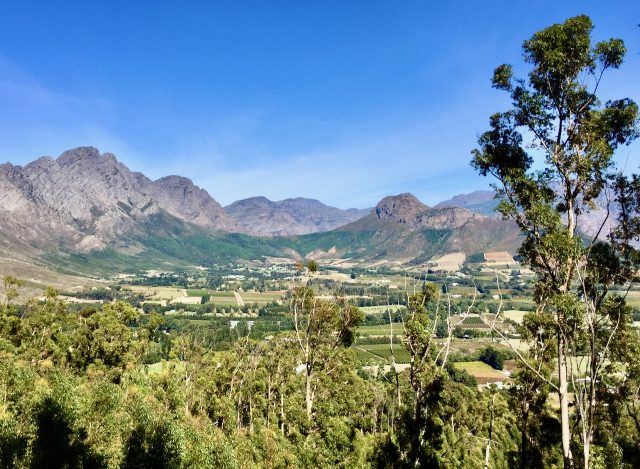
South Africa doesn’t really have the public funds to preserve every corner of its history in a sustainable way, and in staying put, this car collection was running the risk of an under-funded, under-promoted decline into a rust-streaked oblivion. Enter the private enthusiasts to provide a luxurious home to do them justice – the L’Ormarins estate in the beautiful Franschhoek, beneath the jagged peaks of the Groot Drakenstein mountains.
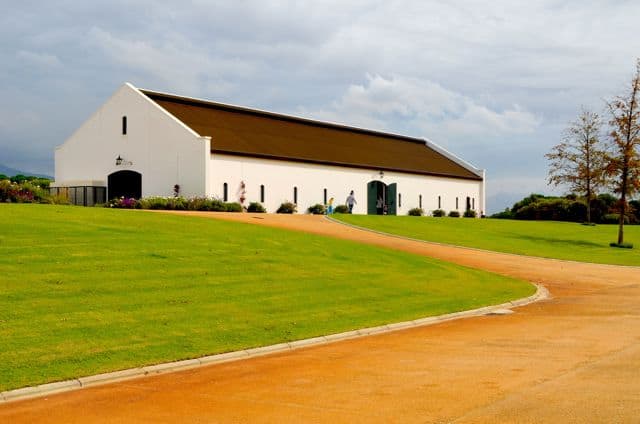
What you can expect in the Franschhoek Motor Museum
So what will you find in this Museum? Simple – you’ll encounter more than 100 years of motoring history with a unique and exciting collection of vehicles, motorcycles, bicycles and memorabilia! A significant portion of it is allocated to all things Formula One (F1), thanks to the dedication of three enthusiastic curators – and if you’re really lucky, you will find Wayne Harley, a walking encyclopedia of South African motor history, who will talk you through the history of the museum and the South African Grand Prix.
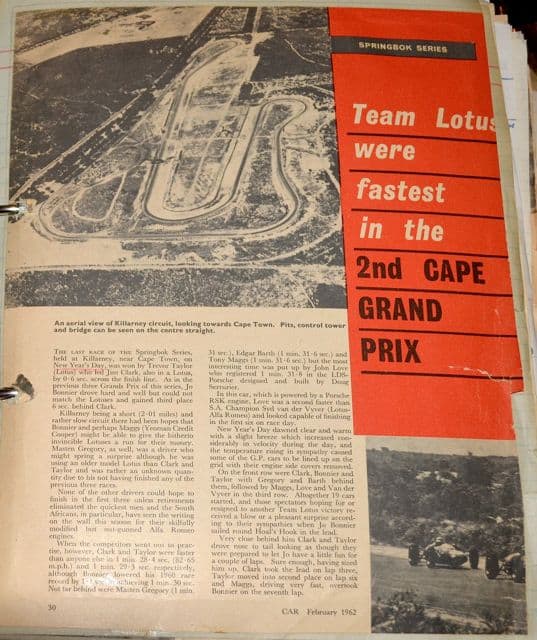
A specific example of the treasures on offer: the Peter Macintosh archives, documenting the history of F1 from its inception in 1951 (and going back even further, to influential Hakskeen Pan speed trials in 1937). Speed is a hot topic right now, thanks to the recent visit of the RAF fighter pilot Wing Commander Andy Green, coming to Hakskeen Pan for speed trials and the run-up to another attempt (scheduled for 2015) on the World Landspeed Record, called Project BLOODHOUND. Green intends to get behind the wheel of a car that is capable of reaching 1,000mph (1,610km/h), thanks to a bolted-on rocket lifted from a Eurofighter-Typhoon jet.
Other fascinating donations include the John Love collections, comprised of trophies, helmets, steering wheels and suits of six South African Grand Prix Champions. They were donated by Love’s second wife Carol and his children Royce and Bart Love. It’s also worth checking out the Sam Tingle collection – made of not just his trophies but also the LDS South African built F1 car he used (donated to the museum by Dug and Lesley Sorea). In total, the Museum holds ten F1 cars – some winners, some also-rans, and a fascinating sideways glimpse into South Africa’s economic power in the 1960s.
The cars at the Franschhoek Motor Museum
Porsche 956C
My personal favourite is the Porsche 956C. This Rothmans Racing car, currently taking pride of place in the displays, owned by the Rupert Family (in connection with Rothman cigarettes). It was Rothmans, via Gunston, that introduced the first branding on F1 in 1969 – namely, team Lotus 49, first undertaken on a local scale and then by John Player on the international circuit. Porsche dominated endurance racing in the early 1980’s with their sensational 917 to such an extent that the race organizers in Europe and the USA changed the rules, ostensibly in the interests of safety. Porsche then introduced the 956C in 1982, and promptly won the World Championship for Makes three years running.
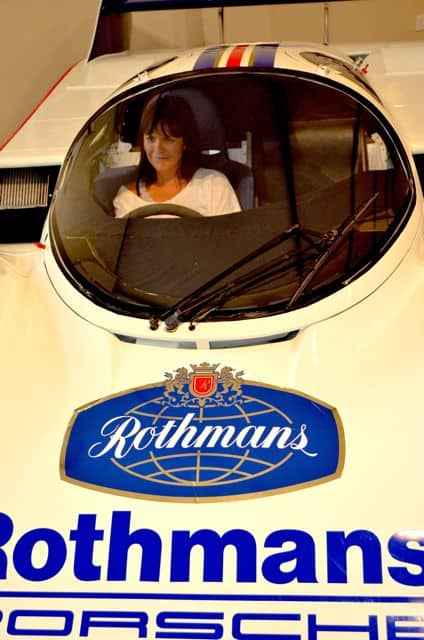
Mercedes-Benz Gullwing
The MERCEDES-BENZ Gullwing is a close second. It’s one of the most iconic cars ever made, developed from the highly successful 1952 300SL racing sports car, whose low-slung spaceframe construction influenced the widespread adoption of those upward-opening doors of the period. For me, it’s also about the sheer look of it (especially with those doors open), and while it’s highly impractical for getting into, I figure that’s a small price to pay. The Gullwing also represented the ‘sport-light‘ design, via ‘Eyebrows’ over the wheelarches – a typical aerodynamic feature of the steel-and aluminium body of the SL.
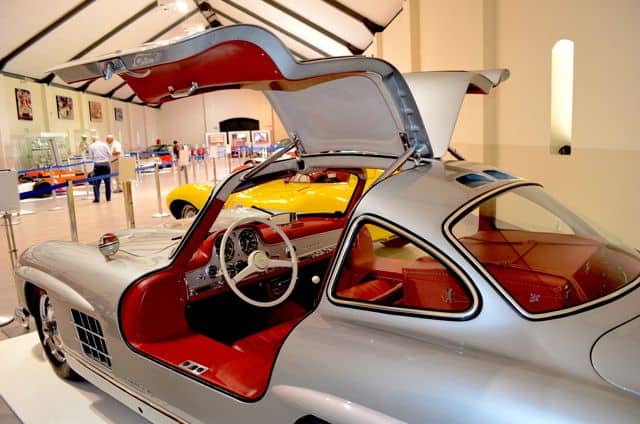
McLaren F1
The McLaren F1 – does this even need explaining? South African Gordon Murray, a long-time Formula 1 designer, spent many successful years with McLaren, during which time he pitched the idea of building the ultimate road car. Murray’s concept centred around a three-seater sports car with a naturally-aspirated engine to increase reliability and driver control. McLaren Automotive gave the go-ahead, and at Monaco in 1992, the F1 was launched.
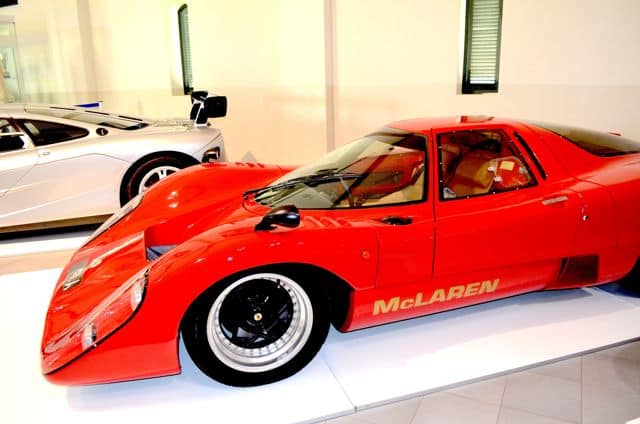
Jaguar D-Type
The Jaguar D-Type – one of the most charismatic and successful sports/racing cars ever made. Introduced in 1954, its aerodynamic shape included a distinctive tail fin to increase stability at high speed. It took part in many sporting events in Europe before being shipped to Japan for the inaugural race meeting at Suzuka. This rare short-nosed car eventually returned to Britain where for many years it was proudly displayed at Jaguar’s Browns Lane factory. Many aspects of its design have informed the development of road cars of subsequent generations – for example, its extensive use of aluminium.
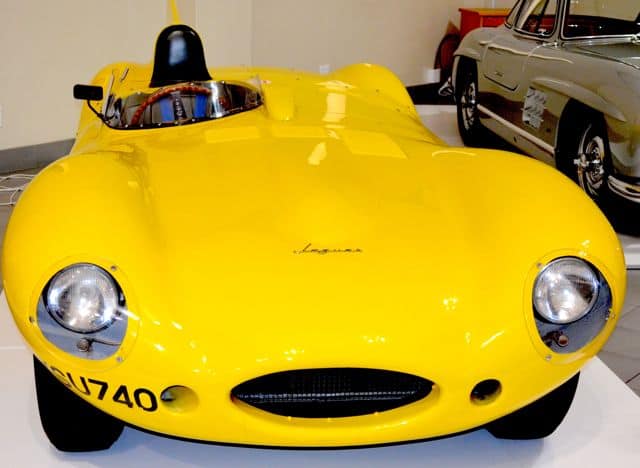
I could go on, but I’ll stop here. Please visit the Franschhoek Motor Museum website for more info on not only their history but also the sound of the engines and video footage of the cars in action. The Franschoek Motor Museum presents visitors with an opportunity to see the uniqueness of the South African Grand Prix, in the beautiful setting of South Africa’s Wine region. It’s a vital and ever-relevant piece of the country’s history, lovingly preserved by true enthusiasts. Highly recommended.

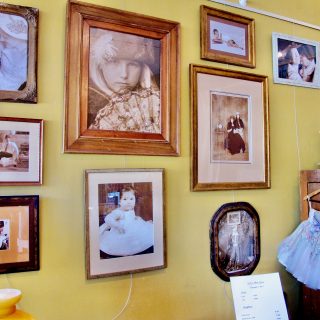
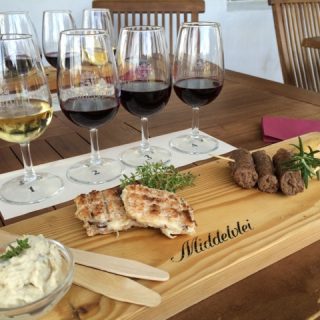
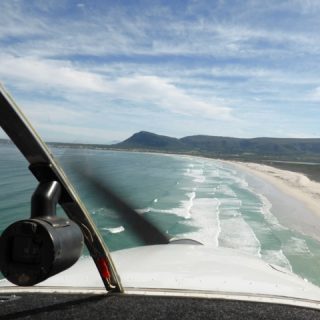
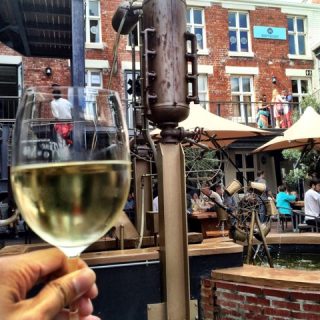






As I was very involved with SA F1 in the 70’s and travelled with the teams (Gunston & Lexington) Many years ago. I often wondered what happened to the Museum in Heidelberg, I am so pleased to hear that it is now in Franshhoek. I have a 1958 mercedes 190 SL for sale and maybe you would know of a collector that I could contact?
Many thanks
Gail Katz (Mostert)
Hi Jeanne, thanks so much for your lovely comment! I’ll keep my fingers crossed for you – for winning that lotto! 🙂
Cheers,
Keith
This was one of my dad’s favourite places – he was a lifelong car addict and I grew up to the sounds of F1 on TV. Jody Scheckter was a hallowed name in our house! Great post about an underrated museum 🙂 If I were to win the lotto I would seriously consider buying a classic gull-wing Merc – pure class on wheels!
Hello Oom Pienaar
Thank you for the lovely comment.
Groete daai kant.
Lezaan
Pragtige artikel Lezaan!
“A walk down memory lane !
Jy neem ons vêr terug. Soos jy weet was ons (Ek ( tannie Bets en later Johann. Jaco en Philip)) daar in Heidelberg en deel van die “Rembrand gesinne” en ontwikkeling heel van die begin af .in 1973.
.
Toe julle nog kinderpartyies bygewoon het op ons spruitwal onderr Begemanstraat 24 se tien koel Wilgerbome.
Ek was ook vir ‘n tyd die voorsitter van “Heidelberg Aksie”. Ons het, in samewerking met met die SAS se historiese stoom lokomotief restorasie Groep, gereelde eendag piekniek uitstappies vanaf Parkstasie na Heidelberg motor museum gereel het. Daar was selfs ‘n spesiale sylyn gebou met ‘n piekniekplek en braai plekke wat vanaf die nuwe stasie uittand regoor die Mortor museum (bestaan vandag nog maar is vervalle).
Kontak ons asb via my e-pos adres
Oom Pienaar Spies
Blenheimweg 11, Stellenbosch
Hi Jerry,
The Kyalami track is located in the Gauteng province near Johannesburg whilst this museum is located in Franschhoek, in the Cape Winelands, about 1.5-2 hours drive east of Cape Town.
Cheers,
Keith
Wow. Beautiful cars! I’d love to check them out up close. Functional art. 😀
Thanks for posting this, and thanks to Lezaan for such an interesting story. Where is this museum in relation to the old Kyalami F1 track?
Thanks Alastair! I know quite a few people who would be drooling too! 🙂 This museum is a gem.
Excellent I love this sort of stuff (but not half as much as my brother. He’d be drooling!)